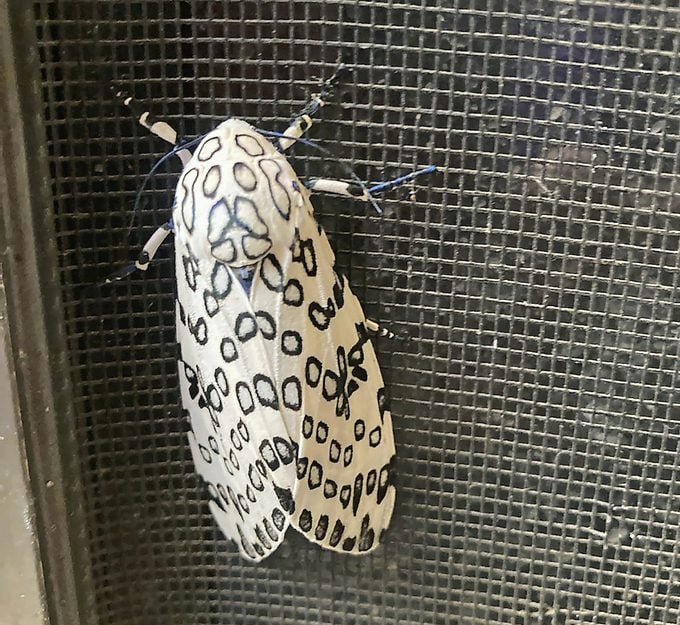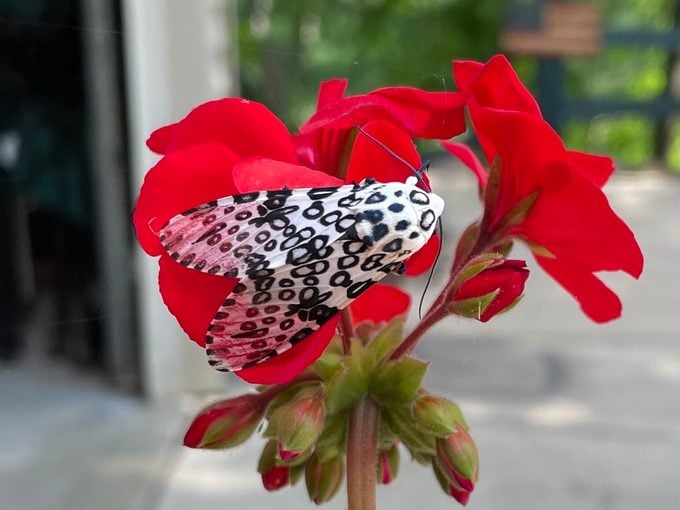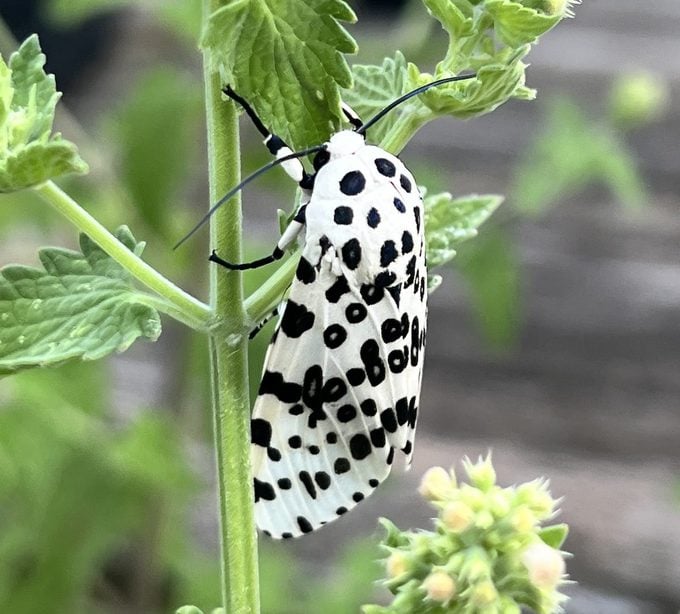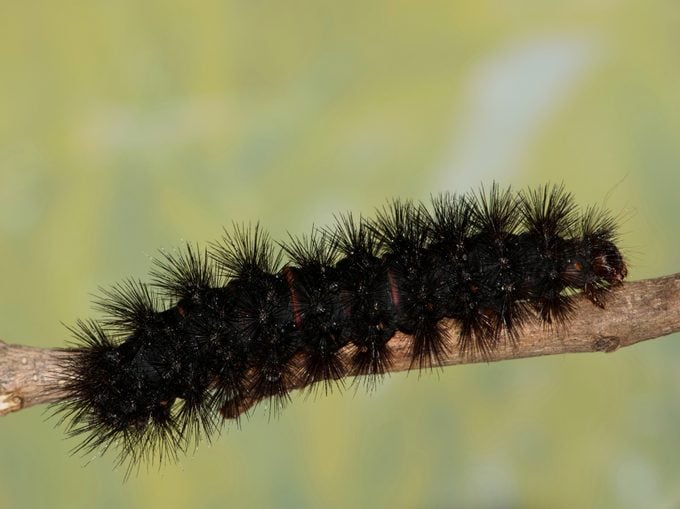Here’s Where You Can Spot a Giant Leopard Moth
Updated: Mar. 22, 2023
What's that polka-dotted moth? Learn all about the giant leopard moth, including where to find one, what its caterpillar looks like and more.
Giant Leopard Moth Range

“What kind of moth is this?” asks Birds & Blooms reader Linda Peevey.
Kenn and Kimberly Kaufman say, “This strikingly patterned creature is a giant leopard moth (Hypercompe scribonia). A member of the tiger moth group, it’s widespread from the eastern United States (and a little of southeastern Canada) south through Mexico and Central America to northwestern South America. However, it seems to be uncommon everywhere in its range, so it’s always a treat to see one. Giant leopard larvae, which are spiny with black-and-orange markings, feed on the leaves of a wide variety of plants.”
Learn all about garden moths and find out why they are important pollinators.
Another reader captured a striking moth photo when one visited her garden.

“I was just working in my flower beds when I saw this most unusual moth (above), so I snapped this shot. I loved the black and white markings of the moth against the red geranium!” says Birds & Blooms reader Virginia Ostervik.
What’s the difference between a moth vs a butterfly?
What Does a Giant Leopard Moth Look Like?

These delightful moths are usually pretty easy to identify. To tell whether you’re looking at one, look for the distinctive white wings with black-bordered or solidly black spots. When the moth spreads its wings, look for an abdomen that boasts striking colors, including shimmery blue and orange. The moth’s wingspan is approximately 3 inches, but lengths varying from 1 to 2 inches based on gender (females are smaller).
As with many butterflies and moths in North America, there’s a specific season to find them. When people spot giant leopard moths, they tend to do so between the months of May through September.
Meet 5 silk moths that might be in your backyard.
What Do the Caterpillars Look Like?

The caterpillars eat a wide assortment of foods, including sunflowers, cherries, cabbages and violets. Giant leopard moth caterpillars overwinter in their final-stage larval form, and then form a cocoon in the spring.
Next, check out interesting hummingbird moth facts.




















